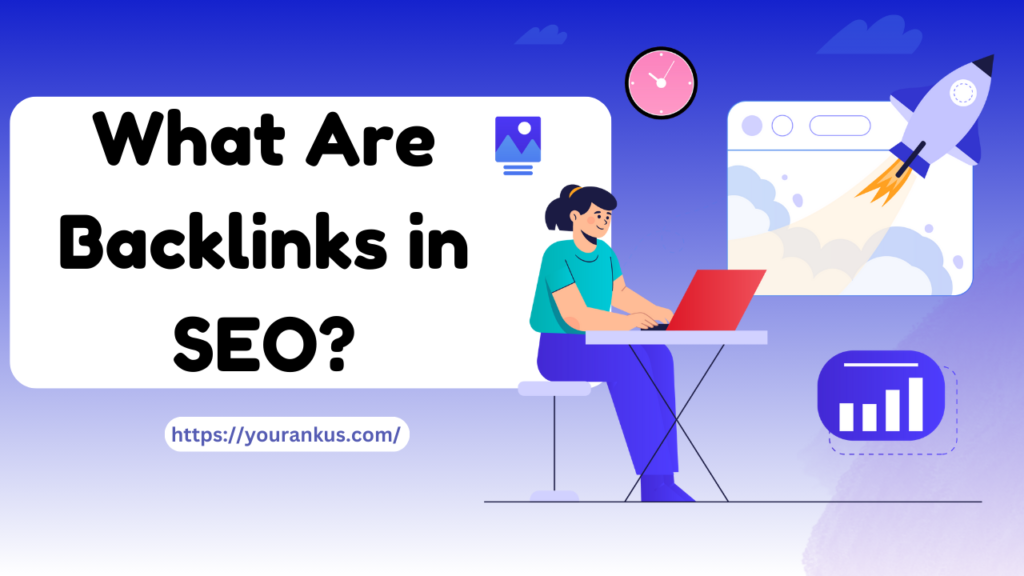If you’ve spent any time learning about Search Engine Optimization (SEO), you’ve probably come across the term “backlink.” But what exactly is a backlink, and why is it so crucial for SEO?
In this article, we’ll delve deep into the concept of backlinks, how they work, and why they are an essential factor in improving your website’s search engine ranking.
What Are Backlinks?
A backlink, also known as an “inbound link” or “incoming link,” is a hyperlink on one website that points to another website. For example, if Website A links to Website B, Website B has earned a backlink from Website A. In the simplest terms, backlinks are votes of confidence from one site to another, signaling to search engines that the content on the linked site is valuable, relevant, and worth recommending.
These links are vital because search engines, such as Google, use them as a ranking signal. When one website links to another, it’s essentially saying, “I trust the content on this site enough to share it with my audience.” Consequently, the more high-quality backlinks a website has, the higher its chances of ranking well on search engine results pages (SERPs).
Types of Backlinks
Not all backlinks are created equal. The quality and source of a backlink significantly influence its impact on your SEO. Below are the different types of backlinks that exist:
Natural Backlinks
These are organic links that you earn without any direct effort. For instance, if someone finds your content valuable and decides to link to it, you’ve gained a natural backlink. Search engines view natural backlinks as highly authoritative because they result from genuine interest in your content.
Manually Built Backlinks
This type of backlink is acquired through deliberate effort, such as reaching out to website owners, influencers, or bloggers and asking them to link to your content. While this requires more effort, it can be highly effective in building a backlink profile.
Self-Created Backlinks
These are links you create yourself by posting your website URL on forums, comment sections, directories, or social media platforms. However, search engines tend to frown upon these as they are often seen as manipulative, especially if done excessively or improperly.
Why Are Backlinks Important?
Improved Search Engine Rankings
Backlinks are one of the most critical ranking factors in Google’s algorithm. Websites with a higher number of quality backlinks tend to rank better for targeted keywords. Google interprets backlinks as votes of confidence from other sites, indicating that your content is trustworthy and authoritative.
Faster Indexing
Search engines use bots to crawl websites, and backlinks act as pathways between websites. A site with more backlinks can be crawled more frequently, allowing new pages to be indexed faster.
Referral Traffic
Backlinks aren’t just beneficial for SEO. They can also drive direct traffic to your site. If a high-traffic website links to you, a portion of their audience might click the link and visit your website, giving you an additional source of visitors beyond search engines.
Building Credibility and Authority
When reputable websites link to your content, it builds your site’s authority and credibility in your industry. Over time, this trust from both users and search engines can lead to improved rankings and more organic traffic.
Factors That Affect Backlink Quality
As we mentioned earlier, not all backlinks are created equal. Several factors influence the quality and impact of a backlink on your SEO performance:
Domain Authority
The authority of the linking domain plays a significant role. Backlinks from highly reputable websites with a strong online presence (e.g., major news outlets or industry-leading blogs) carry more weight than those from lesser-known or low-quality sites. You can assess the domain authority using tools like Moz or Ahrefs, which rank domains based on their credibility and relevance.
Relevance
The relevance of the linking site to your niche or topic matters. A backlink from a site related to your industry or subject matter is more valuable than one from an unrelated site. For instance, a link from a well-known tech blog to a tech company’s website would have more SEO value than a backlink from a cooking blog.
Link Position
The placement of the backlink on a webpage is also crucial. Links embedded within the main content of an article carry more weight than links placed in the footer or sidebar. Google prioritizes contextual links because they are more likely to be clicked and seen as more relevant by readers.
Anchor Text
Anchor text refers to the clickable text in a hyperlink. When the anchor text includes relevant keywords, it can enhance the SEO value of the backlink. However, over-optimizing anchor text (e.g., stuffing it with keywords) can lead to penalties from search engines.
Follow vs. Nofollow Links
A “follow” link passes SEO value from the linking website to the linked site, contributing to improved rankings. A “nofollow” link, on the other hand, tells search engines not to follow the link, meaning it doesn’t pass any SEO authority. While “nofollow” links may not directly impact rankings, they can still drive referral traffic and build brand visibility.
How to Earn High-Quality Backlinks
Create High-Quality Content
Content is king when it comes to earning backlinks. When you produce unique, valuable, and insightful content, other websites will naturally want to link to it. Blog posts, research studies, infographics, and videos are great examples of content that attract backlinks.
Guest Blogging
Writing guest posts for reputable websites in your industry can be a highly effective way to build backlinks. When you provide high-quality articles for other websites, they often allow you to include a link to your website in the author bio or within the content itself.
Reach Out for Backlinks
Another way to build backlinks is through outreach. Identify websites, bloggers, or influencers in your niche who might be interested in linking to your content. This strategy works best when you offer value in return, such as reciprocal promotion or providing content they find valuable.
Broken Link Building
This technique involves finding broken links on other websites and offering your content as a replacement. Many site owners appreciate this because it helps improve their user experience while providing you with a valuable backlink.
Monitor Competitors’ Backlinks
Tools like Ahrefs and SEMrush allow you to track the backlink profiles of your competitors. By analyzing their backlinks, you can identify new linking opportunities or replicate strategies that have worked well for them.
Conclusion
Backlinks remain one of the most essential components of a successful SEO strategy. While it’s important to focus on earning quality backlinks, building a diverse backlink profile requires time, effort, and patience.
The key to long-term success is to create content that people want to link to, and develop relationships with other websites in your industry.
By understanding what backlinks are and how they work, you can implement strategies that improve your site’s visibility, authority, and overall SEO performance. Keep in mind that search engines are continuously evolving, and while backlinks are important, they are only one piece of the SEO puzzle.
A well-rounded SEO strategy that includes keyword optimization, high-quality content, and user-friendly website design will yield the best results.



2 thoughts on “What Are Backlinks in SEO: A Comprehensive Guide”
Thanks For Telling About Backlinks
To improve SEO strategies, it appears to be beneficial to invest in a Backlink Analysis Agent. This is a great application of AI.